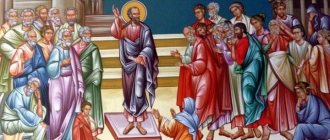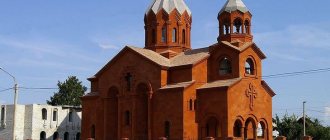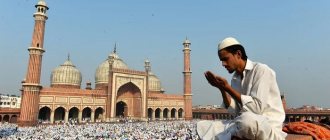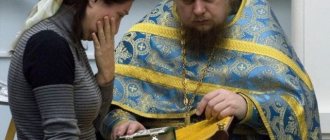Orthodox or not
The main and official religion of this nationality at the moment is Christianity, but it has certain differences here from the Russian Church. The difference is noticeable both in comparison with Catholics and with other directions of this church. Why this happened and what the specifics of their religion lie can only be considered within the political and historical events that in this country occurred simply at an alarming speed and intensely influenced the population.
Christianity by confession accounts for more than 94% of the population. And this is about 2,950,000 thousand people.
The religions of the rest of the population can be distinguished here - Islam, Catholicism, Judaism, Yazidism and some other religions. In this, this Caucasian republic is similar to its Georgian neighbors.
Christianity
Christianity here has its own distinctive features. Therefore, if we express the features and differences of their confession, they are as follows:
- In the person of Jesus Christ, the supremacy of one omnipotent power is recognized, which has a single hypostasis and nature.
- The Gregorian Apostolic Church in Armenia indicates that the divine power and might of Jesus Christ absorbed his human nature. Individual opinions of church representatives that Jesus Christ has flesh are ignored. Thus, the body of Christ is endowed with the qualities of ether, incorruptibility and impassibility.
- In the Caucasian Republic, prosphora mixed with unleavened dough is used during services, in contrast to the Orthodox, which uses leaven.
- When making the sign of the cross, Armenians also do this with their right hand. But they take a different movement - the hand first goes to the left, and then to the right. Catholics perform a similar movement. But among Christians, it is customary to make the sign of the sign by moving the hand first to the right, then to the left.
- Considering the hierarchy of this church, it is worth noting that there are 5 highest spiritual orders, of which the highest is the title of Catholicos. And if we compare it with Orthodoxy, then there are only 3 church degrees.
- If we evaluate the degree of restrictions that are imposed during Lent, then despite the 70-day period of abstinence from excesses before the Easter holiday, on Pentecost, Armenians are allowed to eat eggs and cheese. But this applies exclusively to Sundays.
Despite the fact that all Armenian churches are led by the Catholicos, the name of this religious order does not have any similarities with Catholicism. The head of the Apostolic Church is the highest conciliar primate, whose religious authority extends not only to the inhabitants of the state, but also to those ethnic groups that are located in different states of the world. After all, Armenians are one of the most divided nationalities in the world.
Yandex pictures
But Armenian Christians differ not only from the Orthodox, Georgian, but also from other churches that profess this religion. The following features can be highlighted:
- Divine services are conducted on the Grabar, which belongs to the ancient Armenian dialect.
- The service is accompanied by organ music.
- The walls of temples and churches have distinctive decorations from Christians and Catholics.
- The Armenian faith allows not to offer prayers in front of icons. This is probably why there are practically none of them in churches or they are represented in small numbers.
But from the general point we can highlight such a moment as the time of the service. In the vast majority of cases, Christian holidays among Armenians coincide with Catholic ones in terms of dates. This happens because both churches use the Gregorian calendar.
But if we evaluate how Christianity arose, then it is very important to consider the history of this state. After all, if you count how many millennia this people has existed, at different periods there was the adoption of one religion, then another. But now, in the vast majority of cases, Armenians believe in Jesus Christ. Let us consider briefly, but in as much detail as possible, how and when this ancient people accepted this faith and how many centuries it has existed on the territory of this state.
Here are the milestones that can be identified in Christianity in Armenia:
- This faith arose on the territory of the ancient state of Armenia, starting around the 2nd century AD.
- It became state-owned in 301 AD.
- It is apostolic in name due to the fact that 2 of the apostles of Jesus Christ - Thaddeus and Bartholomew - after the death and resurrection of their teacher, came to the territory of ancient Armenia in order to spread the Christian faith and began to preach there. This is how the first Christian communities were formed.
- But, despite the fact that this religion quickly took root in Armenia, the first steps were quite difficult. Thus, the Apostle Bartholomew was crucified for preaching, and Thaddeus continued for some time to spread this faith in the territory of ancient Armenia.
But in ancient times, before the adoption of Christianity, these people, like the vast majority of other ethnic groups, were pagans. Thanks to a developed culture, including writing, gods and ways of worshiping them are quite well documented on the territory of this state. The chronicles were compiled not only by Armenians, but there are also historical testimonies from Greek and Roman authors. Most often, historians and ethnographers draw certain parallels between the pantheon of Armenian and Greek gods. But after the Christian faith took root among the Armenians, the pagan religion was almost completely supplanted.
If we estimate the founding date of this Church, then it is considered to be 303. This is the date of construction of the Etchmiadzin Cathedral, in which the Supreme Patriarch and Catholicos began to arrive. The cathedral also became a religious center, and a little later a place of pilgrimage for all Armenian Christians.
Yandex pictures
How the pagan religion was replaced by the Christian faith of this people becomes more understandable if we consider that, like any other structural change, this did not happen without some persecution and bloodshed. Thus, Gregory the Illuminator sat in a pit for 14 years because he refused to worship the pagan gods.
But even after Christianity became the official religion in the territory of this country, not everything moved smoothly from the point of view of religion. The Persians and Arabs intensified their persecution of Christians. This situation was observed until the end of the 4th and beginning of the 5th centuries. During this period, tens of thousands of followers of Christianity were killed and died as martyrs. But it cannot be said that the heads of Christians were placed on the altar absolutely without resistance. So in 451 the Battle of Arava took place, which is a striking example of how Christians defended their right to worship. And, although this people lost in the confrontation with the Persians in this military battle, since the opposing sides had unequal forces, Christianity still managed to survive. And already by 484, after 30 years of active confrontation, the Treaty of Nvarsak was signed - according to this agreement, this ethnic group received the right to free religion and Christianity became their predominant religion.
If we draw parallels between the Christian Orthodox, Armenian and Catholic churches, then each of them is distinguished by its specific aspects. And despite the fact that there is much in common between Orthodox and Christians in this country, Catholicism has had a significant influence on the Apostolic Church of Armenia. Therefore, the Armenian Church and Orthodoxy have much in common.
Historical reference
The religion of Armenia is considered quite ancient. Thaddeus and Bartholomew are considered its founders . These are the holy apostles, who are known as the first enlighteners of Armenia. Saint Thaddeus continued his mission for eight years, that is, from 35 to 43. And the mission of St. Bartholomew lasted for sixteen years (from 44 to 60).
According to the Holy Tradition of the Armenian Church, after the ascension of Christ, one of his disciples arrived in the country with Christian preaching. This student was Thaddeus. He converted many people to the new faith, among them was even the daughter of the king of Armenia Sanatruk , whose name was Sandukht . As a result, the apostle, along with the converted people and Sandukht, died as martyrs in Shavarshan.
After some time, having preached on the territory of Persia, , who was an apostle, arrived in Armenia He converted many of the king's nobles to his faith, and among them was the king's sister named Vogui . After this, by royal order, the newly converted people had to suffer martyrdom in Arebanos, located between the two lakes Van and Urmia.
The fact that Christianity began to actively spread in the first century was facilitated by a number of external and internal facts. For example, this religion began to spread widely in neighboring countries such as Georgia, etc. Trade, political and cultural ties with other cities and nearby states created favorable conditions for the spread of Christianity in Armenia.
Thus, Armenia became the first state that adopted the Christian religion as a state religion long before Byzantium and Georgia. This happened in 301, when King Trdat III . Gregory I the Illuminator also provided assistance in this . Gregory I the Illuminator became the first patriarch in Armenia, after which he received the title of Catholicos. This happened in 302. A little later he was canonized, and the church began to be called by his name - the Armenian-Gregorian.
By 303, a cathedral called Etchmiadzin was built near Yerevan. It became a special place for these people and remains to this day the religious center of the country. It houses the Supreme Patriarch and Catholicos of the entire Armenian people.
The video will tell you about the churches of Armenia.
Why do Armenians cross themselves from left to right?
When analyzing what kind of church the Armenians have, it is important not only to understand the faith itself, but also its features. Thus, Armenian Christianity has another distinctive feature, in comparison with the Orthodox. So, while offering prayer in church, these people cross themselves from left to right and say the following words - “In the name of the Father and the Son and the Holy Spirit.” During the word Spirit, the hand should be at the left shoulder, as if tying together the heart of the believer and the Spiritual principle of faith. And this has a lot in common with Christians, although the latter, when they pray, with their right hand, also join three fingers together, first bringing it to the right and then to the left shoulder. It is important to note the differences that have formed among these branches of Christianity. In Orthodox prayer they say “In the name of the Father and the Son and the Holy Spirit.” With the last word, the hand appears at the left shoulder, which also unites this symbol of believers with the heart.
Therefore, although there are differences between the Russian and Armenian manner of baptism - some do it on the right, others on the left - the principle remains the same.
When making the sign of the cross on the right, Orthodox Christians, like Armenians, combine this with the word Spirit.
What faith
Assessing what kind of church and faith there is in this state, it is worth highlighting that for many centuries this people has professed Christianity. It has undergone a certain transformation and formation, but it can be unequivocally stated that this nationality is a consistent adherent of Jesus Christ, the One God and the Holy Spirit.
But the name of the religion widespread in this territory is somewhat unusual - the Armenian Apostolic Church - or AAC for short. The word apostolic originates from the 2 apostles of Jesus Christ, who came to the territory of ancient Armenia with their sermons and desire to bring Christianity to the light. These were Saints Thaddeus and Bartholomew. They came to this territory at different times and preached independently of each other. The fate of Bartholomew was quite tragic, since he was crucified for Christian preaching and this was carried out along with the execution of another 2,000 Christians.
Yandex pictures
Saint Thaddeus, who was cruelly tortured for his religion, did not escape a tragic fate and was nailed to the cross with arrows. Today, the relics of St. Thaddeus are placed in the Etchmiadzin Cathedral, where liturgies are celebrated on certain dates.
Thus, the Armenian Church and Orthodoxy formed a lot in common.
If we evaluate the percentage of religions that Armenian citizens profess today, the numbers will look like this:
- The overwhelming majority of believers consider themselves to be members of the Apostolic Church. This religion is supported by more than 94% of the population. Which is almost 3,000,000 people in the Republic of Armenia itself, as well as people belonging to numerous faiths that are settled all over the world. The second name of this religious movement is the Armenian Christian Church or Orthodox Church.
- No more than 1% of the population belongs to the Protestant movement of Christianity.
- Also, from the point of view of professing a particular religion, there are Muslims, Catholics, Jews, atheists, Yazidis, Orthodox and Baha'is on the territory of this state.
- The most extensive group, from the point of view of faith, immediately after Christianity, is paganism. More than 1.2% of the country's population consider themselves to be among them.
Great educator of the Armenian people
The baptism of an entire people occurred thanks to the educational activities of St. Gregory. He was a descendant of the noble Arksaid family. For his confession of faith, Gregory suffered many torments. Through the prayers of Saint Trdat, he was punished with mental illness for torturing Christian women. Gregory forced the tyrant to repent. After this, the king was healed. Having believed in Christ, he was baptized along with his courtiers.
In Caesarea, the main city of Cappadocia, in 302, Gregory was elevated to the rank of bishop. After returning to Armenia, he begins to baptize the people, build churches and schools for preachers. In the capital of King Trdat III, by revelation from above, the saint founded a temple, which was later named Etchmiadzin. On behalf of the enlightener, the Armenian Church is called Gregorian.
Armenians are Monophysites
Considering that the Orthodox Church of this people has gone through many centuries in its history, it differs from a number of branches of this religion. Why this happened can be answered by looking at the course of historical events. But it is worth noting that this people managed to preserve the original Armenian faith, which is Christianity with all its religious features and established traditions.
Yandex pictures
One of the most non-standard and rarely encountered is Monophysitism or the so-called Eutychianism.
This movement is also a Christian faith, but it has a number of its own dogmas, which it persistently promotes and which it is not going to abandon. Even though, in accordance with the Council of Chalcedon, Eutychianism was recognized as a heresy. But for the sake of fairness, it is worth noting that in 449 the Ecumenical Council of Ephesus took place in the city of Ephesus. Archimandrite Eutychios spoke at it and conveyed his principles of confession of the Christian faith in as much detail as possible. And since the priests who gathered at the council did not find any heresy in his words and conclusions, the abbot was acquitted. But still, in the minds of true believers and those who are not very versed in the canons of the church, much less historical facts, Eusticianism still refers to heresy.
If we talk about the number of Monophysites on the territory of modern Armenia, then they do not make up even 0.5% of the total number of citizens living here. This is the key difference between AAC and its offshoots.
If we mention the history of this movement, it arose in the period between 378 and 454. Its founder was Archimandrite Eutychius, according to whom:
- The unity of the Savior's nature indicates his divinity. But the human essence and nature of Jesus Christ is not denied.
- But taking into account the natural division of the God-man, two persons were simultaneously recognized in Christ where subjective Christologies fought.
Some Armenians, who call themselves and classify themselves as Monophysites, have today accepted the branch of Christianity that prevails in this territory. Therefore, the history of the Armenian church is inextricably linked with Monophysitism.
Are there any Armenians who are Muslims?
Considering that religion is represented not only by Christianity, but also by its various movements, Islam should also be highlighted as one of the religions of this people, although very few in number. Muslims in the republic are represented by no more than 0.25%. And for the sake of historical, social and cultural truth, it is worth saying that mainly Kurds, Azerbaijanis, and Persians who live in the territory of this state believe in the Prophet Muhammad.
Yandex pictures
How many times have Armenians changed their religion in history?
Answering the question of why this nation changed its religion and when they adopted Christianity, it is worth mentioning the following key historical moments:
- Initially, before the emergence of this faith, Armenians worshiped pagan gods. This is their main religion, in which they are no different from other ancient peoples.
- But gradually, with the spread of faith in Jesus Christ, this people gradually converted to Christianity. They no longer worship the gods and idols that were in their pantheon in the previous period of development. At first the number of Christians was small. But after the adoption of this religion as a state religion, a certain unanimity in terms of religion is established within the country.
Subsequently, there were no sharp fluctuations in terms of professed religion. Exclusively certain types of divisions into certain movements of Christianity. But still, the single center of faith is in the AAC, which is also called Gregorian. And answering the question of how many times the Armenians changed their religion, it is worth noting their right to be called one of the most stable nationalities in terms of the stability of their religious views. After all, they only exchanged paganism for faith in Christ. And then they repeatedly defended their right to the opportunity to go to the Christian church, the center of which is located in Etchmiadzin.
What is the difference between Orthodoxy and Armenian Christianity?
From March 16 to 18, 2010, at the invitation of the Primate of the Armenian Apostolic Church, the Supreme Patriarch and Catholicos of All Armenians Gergin II, the official visit of His Holiness Patriarch Kirill to Armenia takes place.
The Armenian Church is one of the oldest Christian communities.
In 301, Armenia became the first country to adopt Christianity as a state religion. For many centuries there has been no church unity between us, but this does not interfere with the existence of good neighborly relations. At the meeting held on March 12 with the Ambassador of the Republic of Armenia to Russia O.E. Yesayan, His Holiness Patriarch Kirill Fr. Readers of our portal often ask the question: “What is the difference between Orthodoxy and Armenian Christianity”?
| Priest Oleg Davydenkov |
Archpriest Oleg Davydenkov, Doctor of Theology, Head of the Department of Eastern Christian Philology and Eastern Churches of the Orthodox St. Tikhon's Theological University answers questions from the Orthodoxy and World portal about pre-Chalcedonian churches, one of which is the Armenian Church.
– Father Oleg, before talking about the Armenian direction of Monophysitism, tell us about what Monophysitism is and how it arose?
– Monophysitism is a Christological teaching, the essence of which is that in the Lord Jesus Christ there is only one nature, and not two, as the Orthodox Church teaches. Historically, it appeared as an extreme reaction to the heresy of Nestorianism and had not only dogmatic, but also political reasons.
Orthodox Church
confesses in Christ one person (hypostasis) and two natures - divine and human.
Nestorianism
teaches about two persons, two hypostases and two natures.
Monophysites
fell to the opposite extreme: in Christ they recognize one person, one hypostasis and one nature . From a canonical point of view, the difference between the Orthodox Church and the Monophysite churches is that the latter do not recognize the Ecumenical Councils, starting with the IVth Council of Chalcedon, which adopted the definition of faith (oros) about two natures in Christ, which converge into one person and one hypostasis .
The name “Monophysites” was given by Orthodox Christians to the opponents of Chalcedon (they call themselves Orthodox). Systematically, the Monophysite Christological doctrine was formed in the 6th century, thanks primarily to the works of Sevirus of Antioch (+ 538).
| IV Ecumenical Council in Chalcedon |
Modern non-Chalcedonians are trying to modify their teaching, claiming that their fathers are unfairly accused of Monophysitism, since they anathematized Eutychus, but this is a change in style that does not affect the essence of the Monophysit doctrine.
The works of their modern theologians indicate that there are no fundamental changes in their doctrine, no significant differences between the Monophysite Christology of the 6th century. and there is no modern one. Back in the 6th century. the doctrine of the “single complex nature of Christ” appears, composed of divinity and humanity and possessing the properties of both natures. However, this does not imply the recognition of two perfect natures in Christ - the divine nature and the human nature. In addition, monophysitism is almost always accompanied by a monophilite and mono-energist position, i.e. the teaching that in Christ there is only one will and one action, one source of activity, which is the deity, and humanity turns out to be its passive instrument. – Is the Armenian direction of Monophysitism different from its other types?
- Yes, it’s different. Currently, there are six non-Chalcedonian churches (or seven, if the Armenian Etchmiadzin and Cilician Catholics are considered as two, de facto autocephalous churches). The ancient Eastern churches can be divided into three groups:
1) Syro-Jacobites, Copts and Malabarians (Malankara Church of India). This is the monophysitism of the Sevirian tradition, which is based on the theology of Sevirus of Antioch.
2) Armenians (Etchmiadzin and Cilician Catholics).
3) Ethiopians (Ethiopian and Eritrean churches).
The Armenian Church in the past differed from other non-Chalcedonian churches; even Sevier of Antioch itself was anathematized by the Armenians in the 4th century. at one of the Dvina Councils as an insufficiently consistent Monophysite. The theology of the Armenian Church was significantly influenced by aphthartodocetism (the doctrine of the incorruptibility of the body of Jesus Christ from the moment of the Incarnation). The appearance of this radical Monophysite teaching is associated with the name of Julian of Halicarnassus, one of Sevier’s main opponents within the Monophysite camp.
At present, all Monophysites, as the theological dialogue shows, come out from more or less the same dogmatic positions: this is a Christology close to the Christology of Sevier.
Speaking about the Armenians, it should be noted that the consciousness of the modern Armenian Church is characterized by pronounced adogmatism. While other non-Chalcedonian churches show considerable interest in their theological heritage and are open to Christological discussion, the Armenians, on the contrary, have little interest in their own Christological tradition. Currently, interest in the history of Armenian Christological thought is rather shown by some Armenians who consciously converted from the Armenian Gregorian Church to Orthodoxy, both in Armenia itself and in Russia.
– Is there currently a theological dialogue with the Pre-Chalcedonian churches?
- It is being carried out with varying success. The result of such a dialogue between Orthodox Christians and the Ancient Eastern (Pre-Chalcedonian) churches was the so-called Chambesian agreements. One of the main documents is the Chambesian Agreement of 1993, which contains an agreed text of Christological teaching, and also contains a mechanism for restoring communication between the “two families” of Churches through the ratification of agreements by the synods of these Churches.
The Christological teaching of these agreements aims to find a compromise between the Orthodox and Ancient Eastern churches on the basis of a theological position that could be characterized as “moderate monophysitism”. They contain ambiguous theological formulas that admit of a Monophysite interpretation. Therefore, the reaction in the Orthodox world to them is not clear: four Orthodox Churches accepted them, some did not accept them with reservations, and some were fundamentally against these agreements.
The Russian Orthodox Church also recognized that these agreements are insufficient to restore Eucharistic communion, since they contain ambiguities in Christological teaching. Continued work is required to resolve unclear interpretations. For example, the teaching of the Agreements about wills and actions in Christ can be understood both diphysitely (Orthodox) and monophysitely. It all depends on how the reader understands the relationship between will and hypostasis. Is the will considered as a property of nature, as in Orthodox theology, or is it assimilated into hypostasis, which is characteristic of Monophysitism? The Second Agreed Statement of 1990, which underpins the 1993 Chambesian Accords, does not answer this question.
With the Armenians today, a dogmatic dialogue is hardly possible at all, due to their lack of interest in problems of a dogmatic nature. After in the mid-90s. It became clear that the dialogue with the non-Chalcedonians had reached a dead end; the Russian Orthodox Church began two-way dialogues - not with all the non-Chalcedonian Churches together, but with each one separately. As a result, three directions for bilateral dialogues were identified: 1) with the Syro-Jacobites, Copts and the Armenian Catholicosate of Cilicia, who agreed to conduct dialogue only in this composition; 2) the Etchmiadzin Catholicosate and 3) with the Ethiopian Church (this direction has not been developed). The dialogue with the Etchmiadzin Catholicosate did not touch upon dogmatic issues. The Armenian side is ready to discuss issues of social service, pastoral practice, various problems of public and church life, but shows no interest in discussing dogmatic issues.
– How are Monophysites accepted into the Orthodox Church today?
- Through repentance. Priests are accepted in their existing rank. This is an ancient practice; this is how non-Chalcedonites were received in the era of the Ecumenical Councils.
Alexander Filippov talked with Archpriest Oleg Davydenkov
Falls from Orthodoxy
The fall of the church from Orthodoxy occurred for a number of political reasons. The key ones are as follows:
- The Armenians themselves, or rather the spiritual fathers of this people, had a fairly high level of pride and desire to participate in the universal church. But they did not succeed to the extent that they expected.
- Thus, in 451 the Ecumenical Council of Chalcedon took place. It was here that the heresy of Archimandrite Eustathius (Eustachia) was proclaimed. This disagreement between the two branches of the church arose because the Monophysites believed that the human drop in Jesus Christ, transmitted to him from his mother, was dissolved in the divine essence. But this was absolutely not consistent with the ideas about the Son of God on the part of the Orthodox Church.
- This council took place without the participation of the Armenian bishops, which caused their extreme displeasure. Representatives of other Transcaucasian churches were also not present here. This fact was due to a number of historical and political processes that took place at that time in the region. After all, Persia quite actively attacked this territory, trying not only to enslave the people of Transcaucasia, but also trying to eradicate the Christian faith here.
- The moment the Armenian church ministers learned about the decision that was made at the Council of Chalcedon, they refused to accept its decision. They perceived such a statement from fellow believers as nothing other than a revival of Nestorianism. But this also did not correspond to complete reality. And the misunderstandings that arose were formed because the information was conveyed to them by Monophysites who came to the territory of this state and, in fact, deliberately spread a false rumor.
- Subsequently, when the resolution of the Council of Chalcedon was brought to the territory of Armenia, a second misunderstanding arose. It was connected with ignorance of the Greek language in detail. And the free translation of just one word, which the Armenians interpreted as “face” instead of “nature,” led to incorrect conclusions.
- Subsequently, in 491, a Local Council was held in Vagharshapat, which was attended by representatives from Armenia, Albania and Georgia. The only solution was to refute the resolution of the Council of Chalcedon. This caused certain strife and friction between the two branches of the church. And they lasted for several centuries. This was the fact that the AAC fell away from Orthodoxy. But Christianity in Armenia developed and took root quite quickly and intensively.
Muslim yoke
If we briefly describe the next period that this church had to go through, it dragged on for a fairly long period of time. So, over the course of several centuries, this people had to win their right to practice Christianity, because the Armenians had territorial, religious and political disputes with their immediate neighbors - the Persians and Turks. And the Islam that they professed was subject to fundamental contradictions. Which led to numerous military conflicts.
When they say, name specific historical dates, the following points can be highlighted:
- 7th century - Armenia was captured by the Arab Caliphate. The rule of Muslims here lasted for almost 3 centuries.
- By the 11th century, most of the territory of this country came under Ottoman rule.
- Subsequently, Armenia began to belong to Georgia. And from the Georgians it passed to the Mongols. Under the rule of this people, who also profess Christianity, this Caucasian ethnic group did not last long. The Georgians quickly lost dominance over the territory.
- By the 14th century, this territory had suffered crushing blows from the hordes of Tamerlane.
- And over the next 2 centuries, the Armenians were forced to wage a fierce struggle, first with tribes from Turkmenistan. And then she began to be torn at the theater of military operations between the Ottoman Empire and Persia. As a result, Armenia ceded to Turkey. This Muslim yoke lasted until the beginning of the Russian-Persian wars of 1813 and then 1829. During this period, the eastern part of Armenia became part of the Russian Empire. The rest of the territory remained under Ottoman rule.
- This fact contributed to the emergence of such a terrible period in the history of this people as the Armenian genocide by Turkey. And, although it is not recognized by the latter, according to historians, over several decades, until 1921, the Turks exterminated from 500,000 to 1.5 million Armenians. Part of the population was executed, while others were subjected to severe trials. They were evicted, persecuted, and starved. And this was not only a tragic burden for the people themselves, but also a real test for the preservation of faith and the church.
Yandex pictures
Armenian Church today
But it is worth noting that the Armenian faith has survived all the difficult times, no matter how many trials fate would have sent to this people with ancient history. Indeed, even today they worship and offer prayers to God, Jesus Christ and the Holy Spirit. But Armenians pray in their own way, without turning to icons, which is the norm for their canons.
If we talk about the state of the AAC, Orthodoxy and Catholicism in this country today, it is worth highlighting the following key points. The spiritual and religious center of the Armenian Church is Holy Etchmiadzin. This monastery is located only a few tens of kilometers from the capital of Armenia - Yerevan. The head is the patriarch, who differs in his rights from the Supreme Servant of the Catholic or Christian churches.
But it is worth noting the fact that compromising publications often appear in the press against high ministers and priests, exposing them in the love of money, profiteering, and nepotism.
And what kind of church the Armenians have today is due to the historical events that took place on their territory and befell them.
Head of the Armenian Church
The Armenian Apostolic Church is headed by the Supreme Patriarch or the so-called Catholicos. This title is assigned for life on an elective basis. This word has nothing to do with Catholicism and is not an analogy to the title of patriarch. And its name comes from the ancient Armenian basis, the essence of which is the highest spiritual degree of a person occupying a certain highest hierarchical rank in the Armenian Church.
Yandex pictures
True Orthodox believers love their catalycos and have undivided faith in him. After all, he is at the highest level of the church hierarchy, which gives him the right to carry out a number of manipulations within the church aimed at maintaining and strengthening the Armenian Christian Church.
It is important to note that given the fact that Armenians are one of the most dispersed nations around the world, it is the Etchmiadzin Monastery that is the center that always receives and unites its believers.
Yandex pictures
And the Armenian apostolic power of the Catholicos expands to those church orders that administer dioceses in other states.
Features of the Armenian Apostolic Church
Despite the fact that the Armenian religion belongs to Christianity, it has its differences from Orthodoxy and Catholicism. All churches are usually divided into two types: Monophysite and Dyophysite . The religion of Armenia belongs more to the first type. According to the teachings of the Dyophysites, two principles are recognized in Christ, namely:
- human;
- divine.
In contrast to them, the Monophysites recognize in him only one principle - the divine. The Armenian Church adheres to special rules regarding the seven sacraments.
In accordance with this, at baptism the baby is sprayed three times and immersed in water three times. Confirmation has a close connection with baptism. During communion, only pure wine is used, without diluting it, and unleavened bread is taken, which is dipped in wine. Only clergy are given unction immediately after death.
Armenians believe in saints, but do not believe in purgatory. Their fasts are also strictly observed, but they have much fewer holidays. Their main prayer is called Air Mer, that is, Our Father, but they read it in ancient Armenian.
The head of the Armenian Church is called Catholicos . He is elected at the Etchmiadzin Synod. Deputies from all Russian and foreign Armenian dioceses gather for it. This title is approved by the Sovereign Emperor with the help of a special charter. The Catholicos resides in Etchmiadzin . According to tradition, every Armenian should visit this place at least once in their life.
Only the Catholicos can appoint bishops and archbishops of the church. Those people who belong to the secular clergy can marry only once. Remarriage is not allowed. Churches in Egypt, Ethiopia and Syria have similar related features.
The spiritual and administrative center of the religion is the Etchmiadzin Cathedral . This cathedral is a sacred place for all believers in this state. It also houses a theological academy and seminary. Nearby there are two more monasteries, which were built around the seventh century and are a cultural and spiritual heritage. This is the monastery of St. Hripsime and St. Gayane.
According to geographical data, the Armenian Apostolic Church has spread almost throughout the world. However, its beliefs and attitudes are the same. Due to the influence of economic and political factors, religion was forced to leave the state from time to time, starting in the 9th century, and was forced to seek refuge abroad.
Because of such conditions, the Patriarchates of Jerusalem and Constantinople and the Cilician Catholicos (Great House of Cilicia), currently located in Antilia (Lebanon), were formed in the Apostolic Church.
All these episcopal sees are “spiritually” subordinate to Etchmiadzin, but enjoy internal administrative autonomy.
Armenian Apostolic Church - difference from the Orthodox
If we draw analogies and differences between the Apostolic Church and Orthodoxy, we can highlight such defining points as:
- Independence of the Apostolic Church from Catholics and Orthodox Christians.
- The dogmas professed by the three branches of Christianity also differ in key ways.
- If we talk directly about the idea of God and Jesus Christ as his son, then here lies a significant difference in perception. Thus, Catholics and Orthodox Christians agree that Christ combines the human and divine principles. This is how a single essence of God is formed, which is the ideal and object of worship for all believers. But this is opposed by adherents of the Apostolic Church, as well as Monophysites, who perceive Christ differently. The Nestorians speak at once about 2 entities that exist in parallel. Then, as the Monophysites claim, the human element is so weak in Christ that it is completely and inseparably dissolved in his divine essence.
- Additionally, one can indicate in the form of differences in the perception of faith - different decorations in churches, different types of worship and some different aspects in the rituals performed.
But this ultimately unites the Christian church itself more than it divides it. After all, it is in diversity that one can find that unity and grain of truth that different peoples have been looking for for so long.
Where is the center of the Armenian Apostolic Church located?
Not everyone knows about the fact that the center of the Apostolic Church is located in Etchmiadzin, which is a monastery. The center of its location is the city of Vagharshapat, located in the Armavir region.
Yandex pictures
The history of the Echmiadzin Monastery is interesting and unusual. After all, its founding date is 303 AD, when Christianity came to the territory of this country. Subsequently, the cathedral, together with the adjacent monastery, experienced waves of rise and decline several times, which only contributed to the strengthening of faith.
Official religion of Armenia
As already noted, about three million people live in the country and most of them, namely 94%, profess Christianity. These people belong to the Armenian Apostolic Church. This is one of the oldest Christian communities. It is believed that Armenia is the first Christian state in the world. People's faith in the Heavenly King and his son Christ made this religion the state religion.
According to the country's constitution, people have the right to choose any religion or not adhere to any faith. That is, the constitution guarantees freedom of religion. Therefore, in the country you can also meet people who belong to other faiths. In the country you can meet people who profess:
- Islam;
- Orthodoxy;
- Catholicism and some other less common religions.
Armenian Catholic Church
The Catholic Church of this state was founded in the period of 1439, when the Union of Venice met.
This was due to the death of Byzantium, when Catholic missionaries began to move to adjacent territories to promote the faith.
Yandex pictures
Venetian Armenia
This period does not provide a clear answer as to which church prevailed among the Armenians in different territories of the country. Thus, given the fairly close contacts during the 17th century between Greece, Venice and some parts of Italy and Armenia, a center of Armenian culture was formed on one of the islands of the Venetian Bay. this process was facilitated by the monk Manuc di Pietro. It was he who came up with the idea and a series of actions aimed at organizing the Armenian community here. It was people from the Caucasus who built churches, monasteries and a library here, which today have acquired the status of a museum.
Yandex pictures
Other religions
The spiritual image of society is formed not only by orthodox religion. Armenia is home to 36 parishes of the Armenian Catholic Church community, which are called “Franks”. The Franks appeared in the 12th century along with the Crusaders. Under the influence of the Jesuits' preaching, a small community of Armenians accepted the jurisdiction of the Vatican. Over time, supported by missionaries of the Order, they united into the Armenian Catholic Church. The residence of the patriarch is located in Beirut.
The small communities of Kurds, Azerbaijanis and Persians living in Armenia profess Islam. In Yerevan itself, the famous Blue Mosque was built in 1766.
Where do Armenian Catholics live?
Considering the fact that the Armenian people themselves are one of the most dispersed around the globe, it is worth highlighting those countries in which the largest number of Armenian Catholics are currently present. The largest number of them is present in:
- Georgia.
- Lebanon.
- Syria.
- Iraq.
Yandex pictures
Religious minorities of Armenia
Regardless of the faith, it is worth noting their tolerance in terms of what people living in this country believe and love. After all, the Gregorian Apostolic Church is not the only one. Although it has the right of state religion, not only within a given state, but also in individual dioceses located in other countries. The following religions are also represented here.
Buddhism
Previously, there were Buddhist temples on the territory of Armenia. This happened back in the 13th century, when this territory came under Khan Khulag. But the memory of them was not preserved, since they were destroyed.
As for the current state of Buddhists on the territory of Armenia, they number no more than 0.5% of the total number of citizens of the country.
Yandex pictures
Yezidism
The existence of this faith on the territory of the Republic of Poland is due primarily to the fact that the Yezidis are a separate ethnic group with their own established traditions and culture. Today there is Sharfanism in Yezidism. This is the direction to which 69% of the population professing this faith and 31% of ethnic Kurds belong. The total number of Yazidis is at least 1% of the country's total population.
Yandex pictures
Judaism
Today, there are no more than 3,000 Jews on the territory of the Republic of Armenia. The largest part of them inhabits the capital Yerevan.
Yandex pictures
Islam
If we point to the Islamic religion, then its adherents on the territory of Armenia are people from Azerbaijan, Kurdistan, as well as the countries of the Persian Gulf. Communities are formed locally, depending on how many Kurds, Persians or Azerbaijanis inhabit a particular urban or rural entity.
Thus, today, on the territory of the Republic of Armenia, Kurdish Muslims form a single community, the number of which does not exceed several thousand people. Their maximum number is located in the province of Kotayk, located in the northern tip of the Yerevan region.
According to the latest census, the capital Yerevan itself accommodates about 1 thousand Muslims who are refugees or people from the Middle East.
Molokans
But the Molokans are one of the directions of Christianity, which for the most part are associated with Old Believer traditions. This religious group was formed on the territory of this country after a decree of Emperor Alexander I was issued in 1805, as a result of which the Molokans were persecuted. In search of happiness and freedom of religion, they found themselves on the territory of the modern Republic of Armenia, forming separate local groups in small numbers.
Yandex pictures
Paganism
Speaking of paganism, no matter how surprising this fact may be, as of 2011, according to the latest census, about 5,434 followers of this religious cult live in Armenia. Of these, only 734 people are of Armenian nationality. While the rest of the followers of paganism are represented by other ethnic groups and nations.
Yandex pictures
The first Christian state in the world
A full decade before the adoption of the Edict of Milan by Emperor Constantine the Great, in 301, King Trdat III broke ties with paganism and proclaimed Christianity as the state religion. During a time of terrible persecution of the followers of Jesus throughout the Roman Empire, the ruler took a decisive and unexpected step. This was preceded by turbulent events in Transcaucasia.
Emperor Diocletian officially proclaims Trdat king of Armenia, which was part of the Roman province of Cappadocia. In 287, through the mediation of the Roman legions, he returned to his homeland and assumed the throne. Being a pagan, Trdat began to zealously perform religious rituals, while commanding the persecution of Christians to begin. The brutal execution of 40 Christian girls makes a sharp turn in the fate of the king and his subjects.










